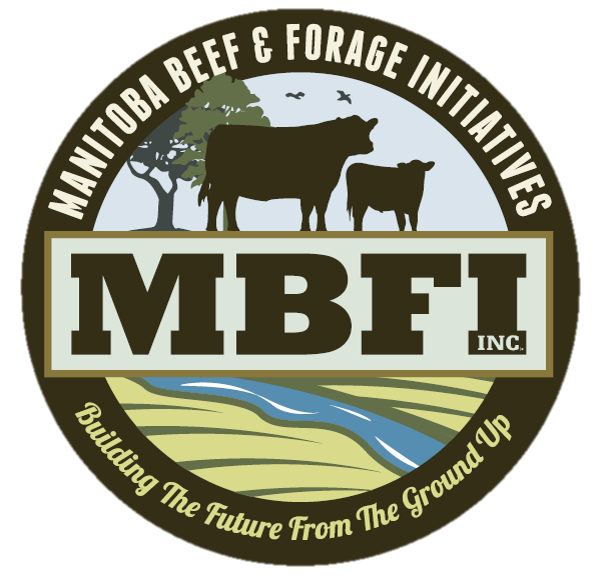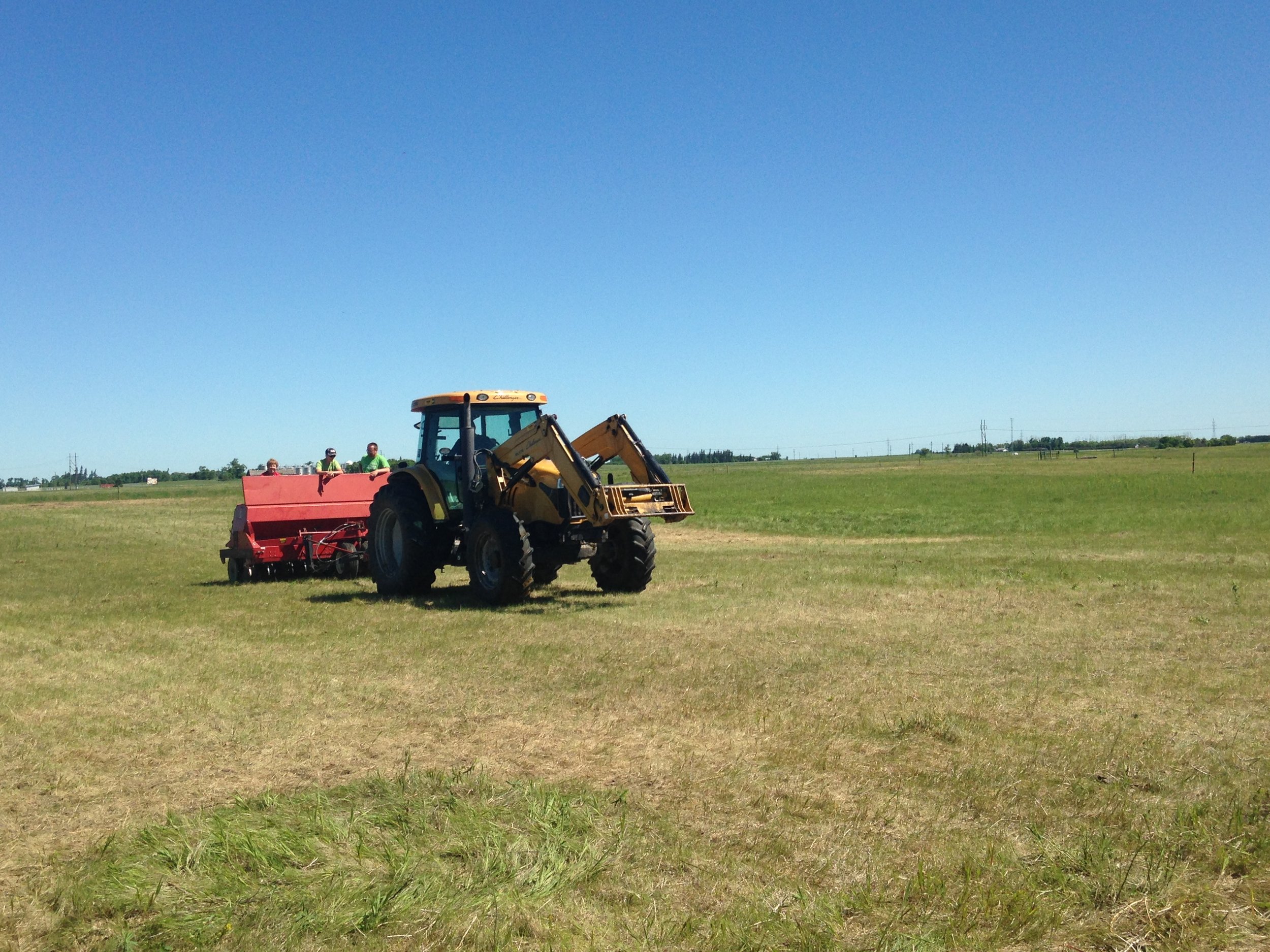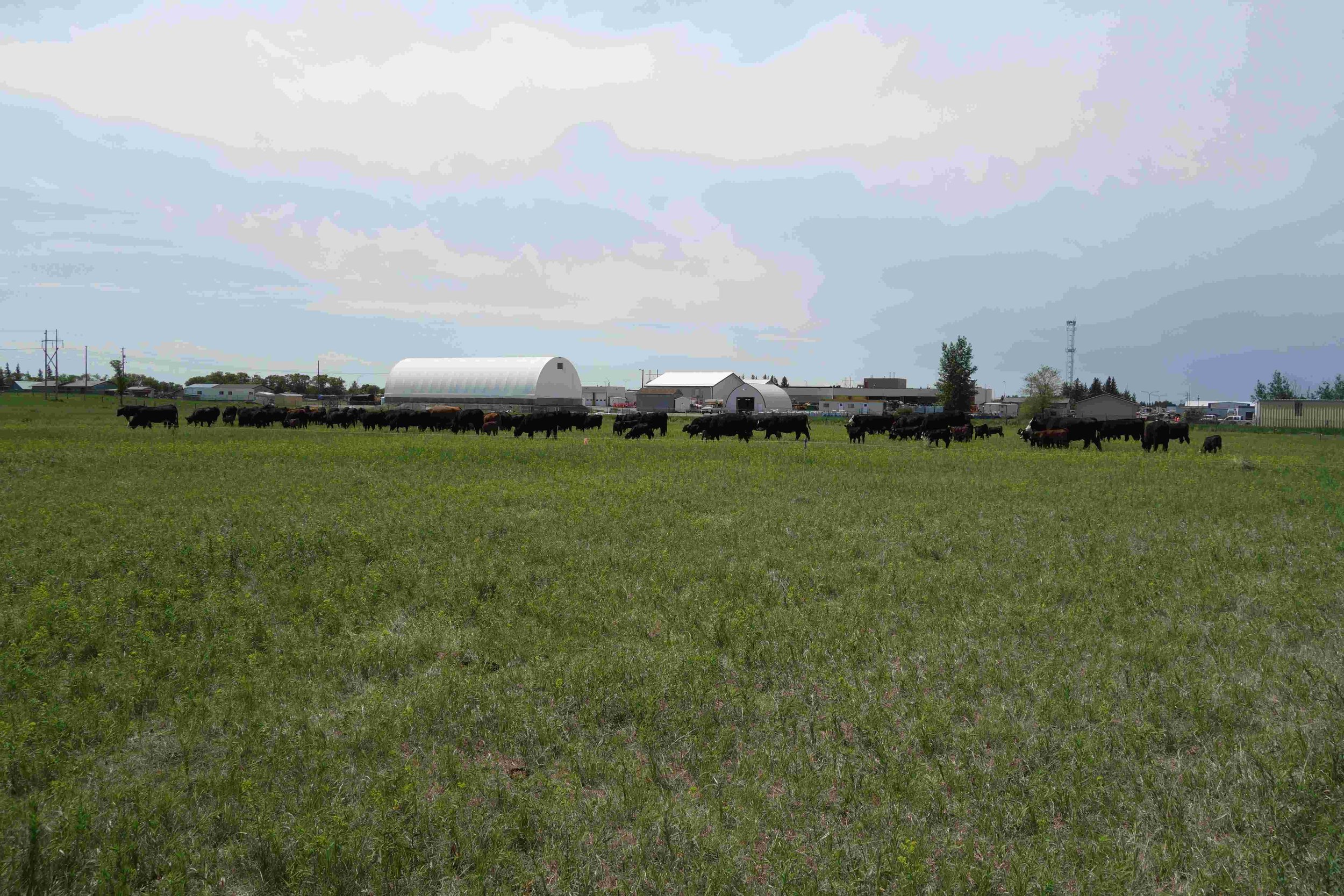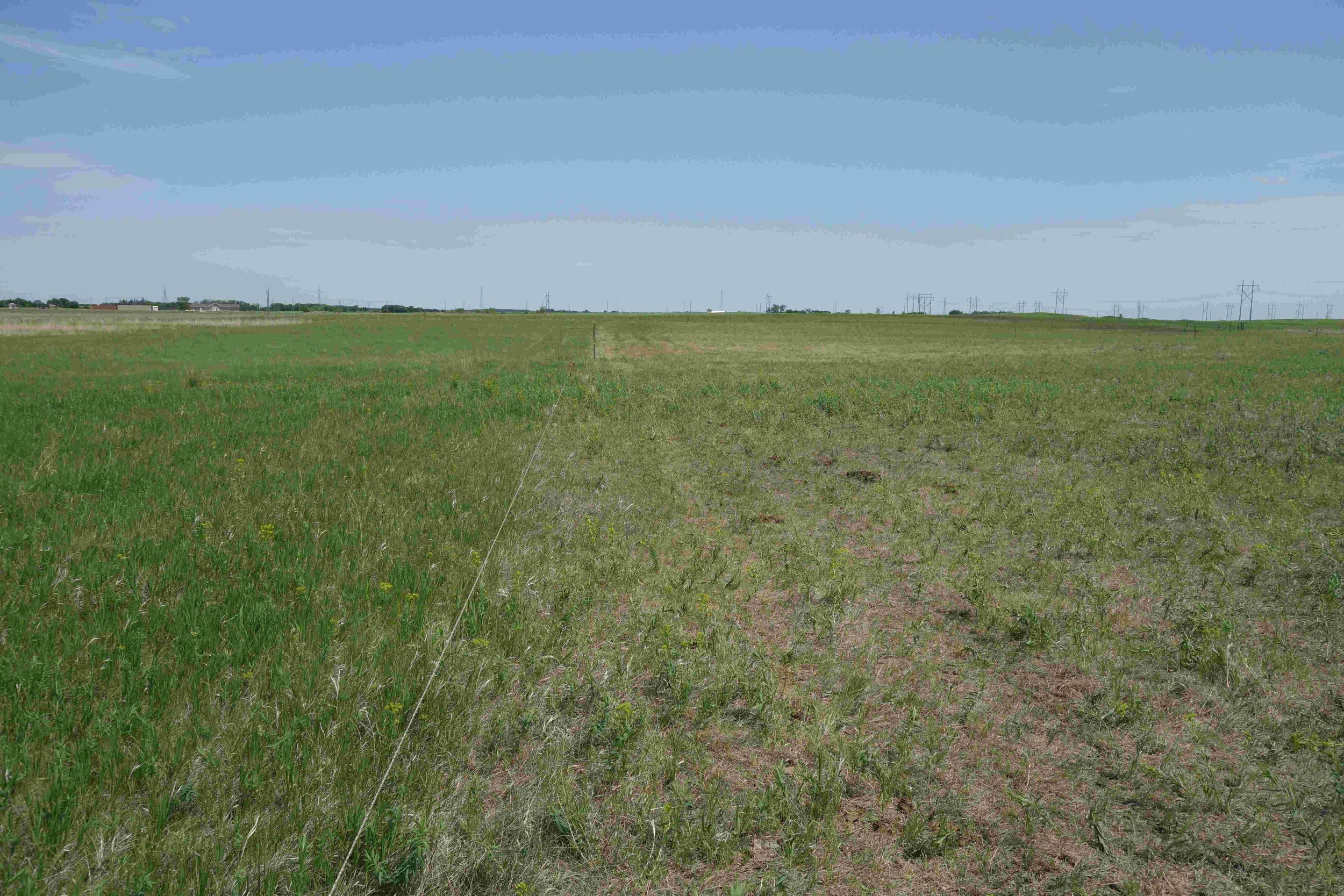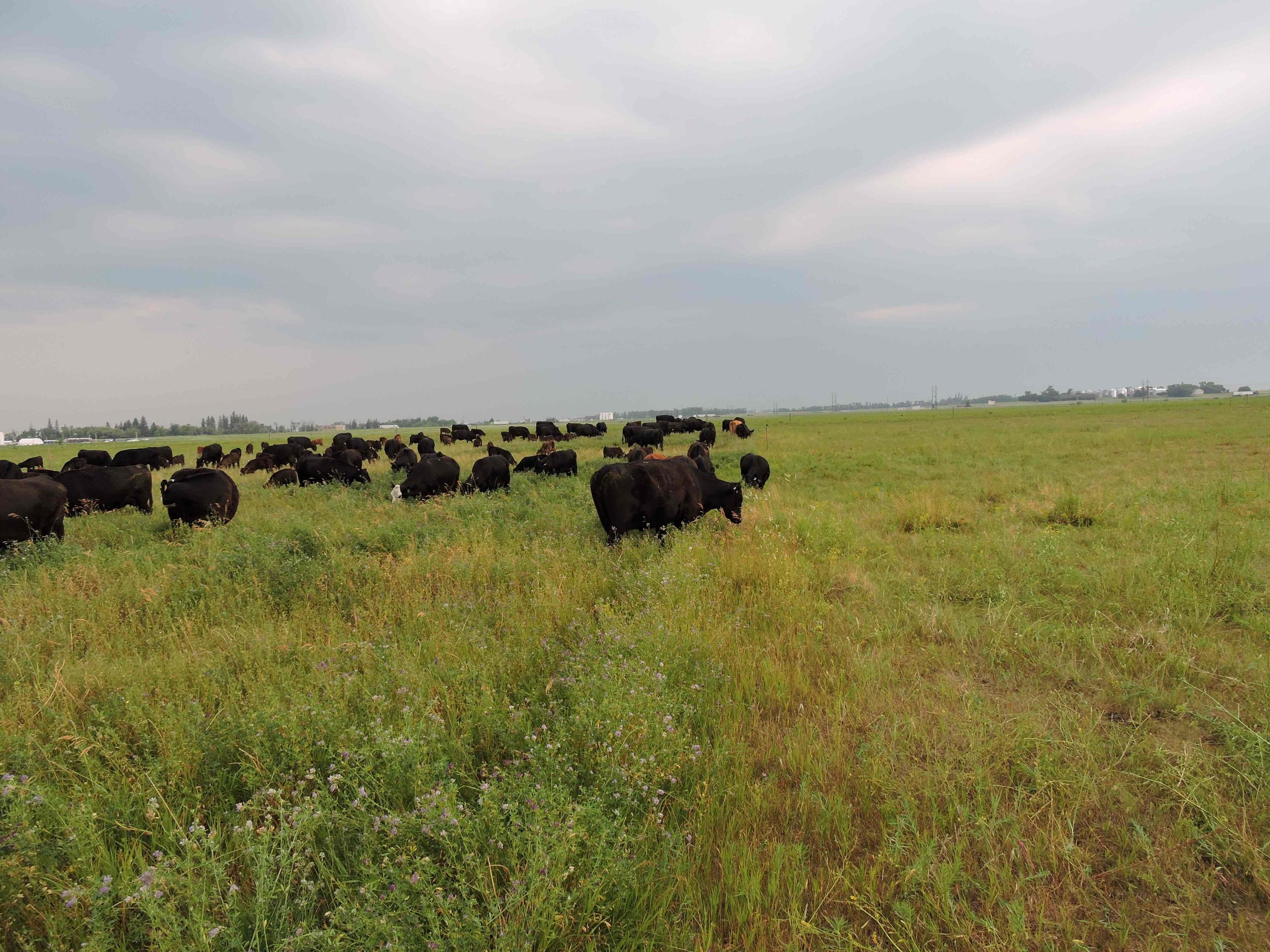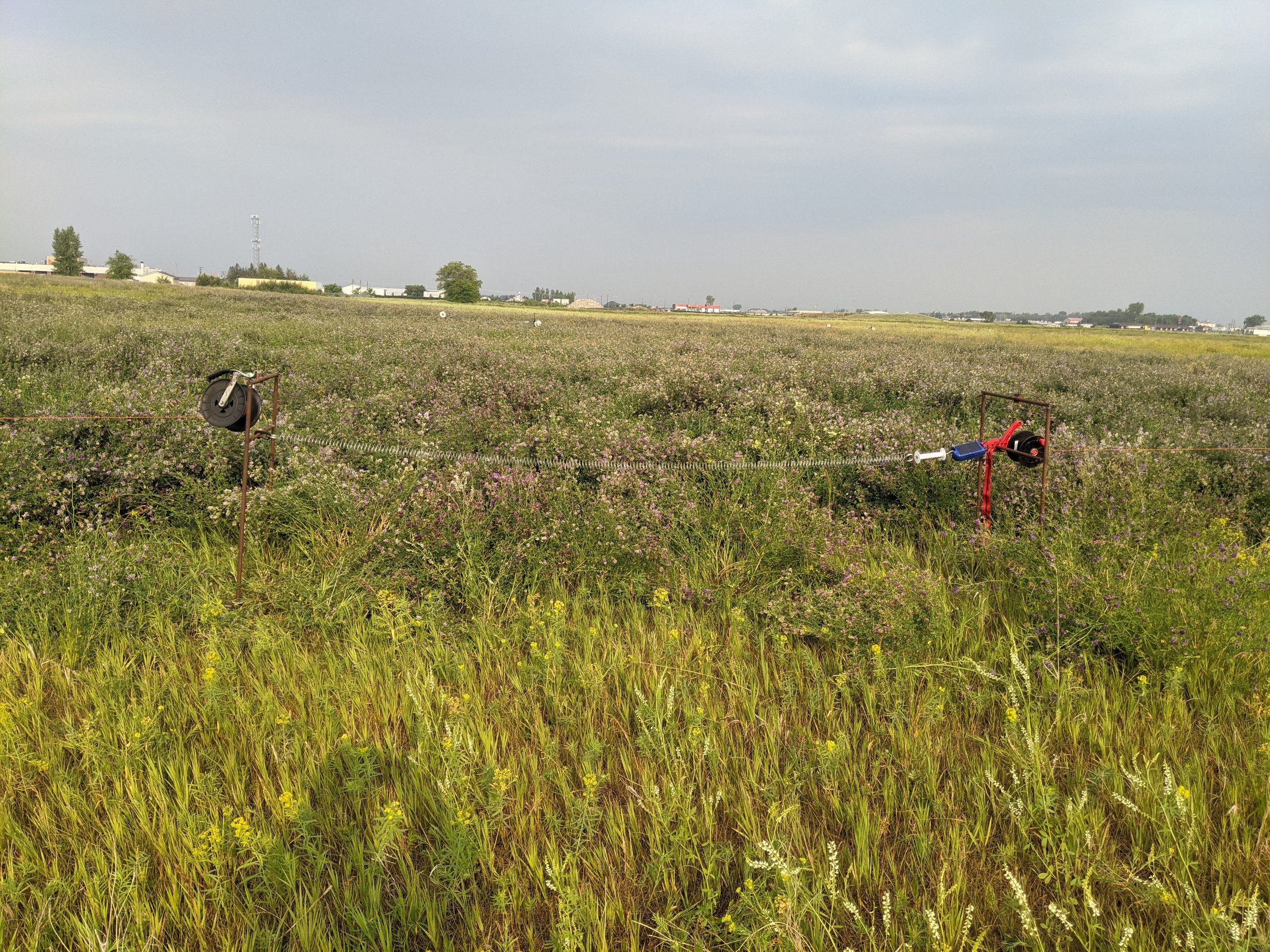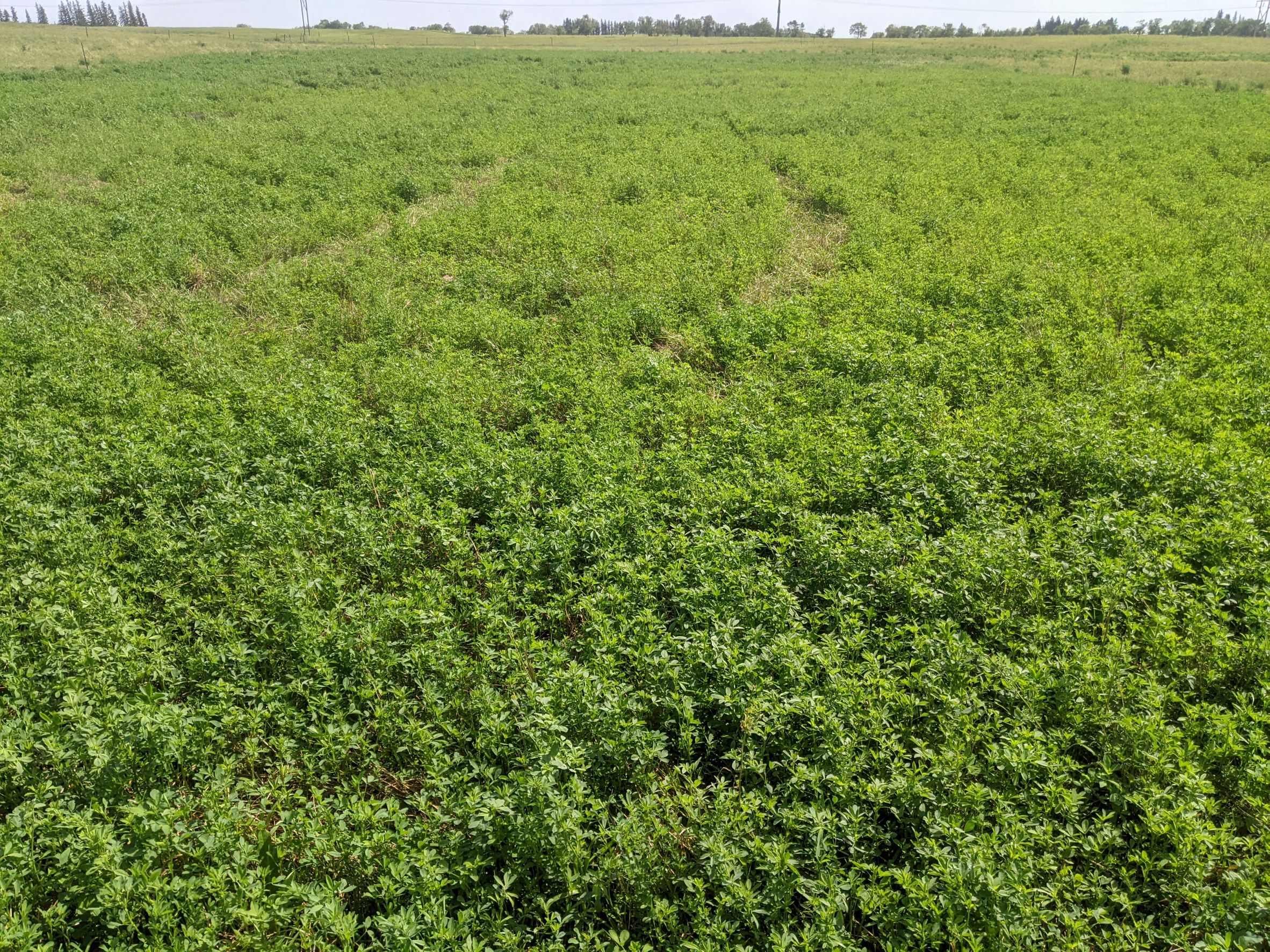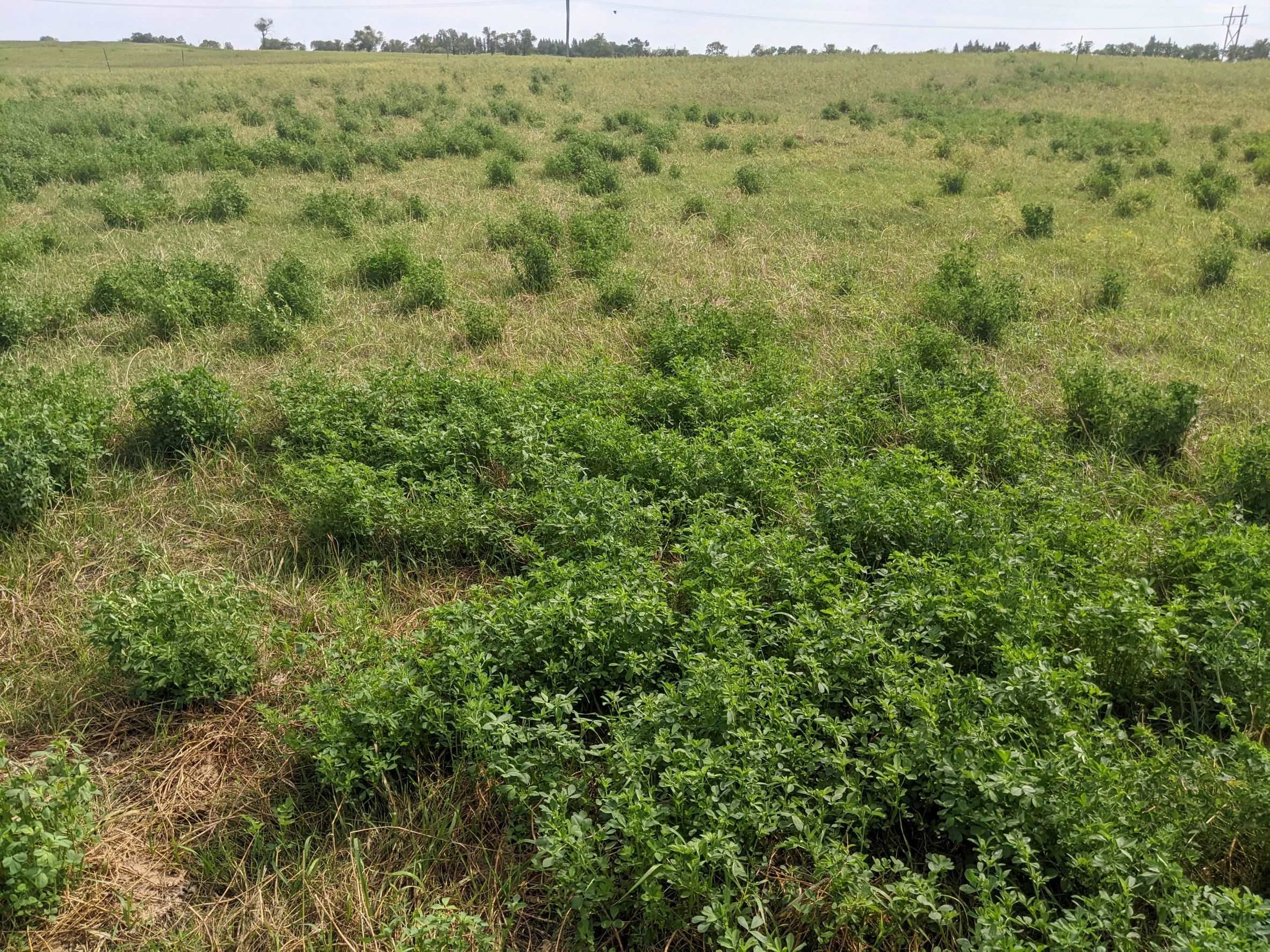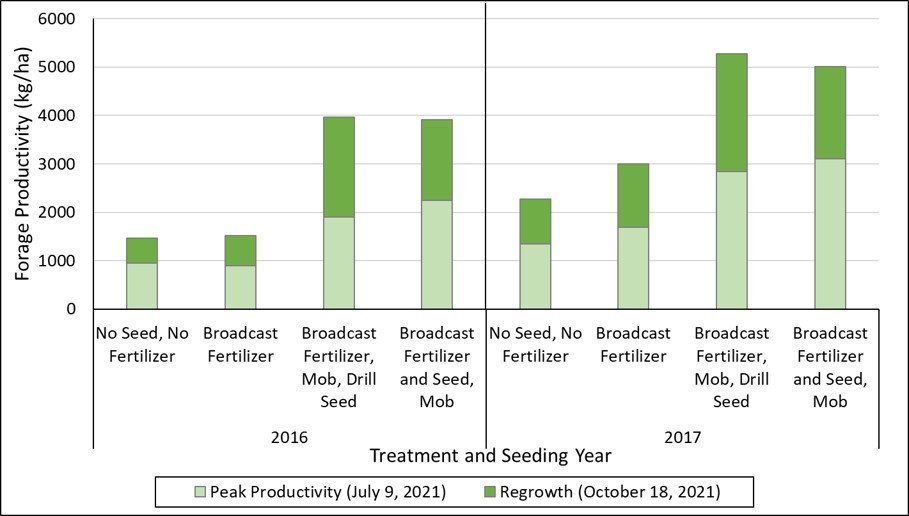Back to Research & Demonstration
Introducing legumes into an existing forage stand using sod and broadcast seeding and mob grazing techniques
Project Details
Project Lead: Jane Thornton (Manitoba Agriculture, retired)
Collaborators: Sean Schnell (Imperial Seeds), Mae Elsinger (Agriculture and Agri-Food Canada)
Years: 2016 - 2021
Project Status: Complete
Funding & In-Kind Support: Imperial Seeds, Growing Forward II
Location: First Street Pasture
Scope: Demonstration
Keywords: Forage Rejuvenation, Perennial Forages
Approach
Three pasture rejuvenation treatments were tested against doing nothing:
Suppress pasture with mob grazing + broadcast sulphate and phosphate fertilizer + direct seed alfalfa with drill,
Suppress pasture with mob grazing + broadcast sulphate and phosphate fertilizer + broadcast alfalfa seed and incorporate it into soil with mob grazing,
Suppress pasture with mob grazing + fertilize with sulphate and phosphate fertilizer.
Alfalfa stem counts, productivity, and forage quality were compared from planting year to 2021.
Key Findings
Precipitation: Regular patterns of precipitation are essential for establishing alfalfa with either seeding method.
Germination: Germination counts were good in both seeding methods in 2016 and 2017 but failed in 2018.
Establishment: Not all germinated plants survived until fall of the planting year. By 2021, alfalfa stem counts stabilized to between 16 and 18 stems/ft2 for both seeding methods.
Forage Yield: Adding alfalfa to marginal pasture increased forage yield, even compared with just fertilizing. Seeding method did not make a difference.
Forage Quality: By 2021, the alfalfa stands had higher protein, calcium, magnesium, potassium, copper, and zinc, and lower fibre and iron than grassy stands. There was no difference in phosphorus.
Alfalfa stem counts (number per square foot) in their first summer, the same fall, the following summer, and in 2021 for the two seeding methods tried over three years.
2021 forage productivity comparison among seeded and unseeded plots established in 2016 and 2017. The 2018 plots were not sampled because the planting failed.
Related Projects at MBFI:
Industry Resources:
Rejuvenating Tame Pastures - BCRC
Sod Seeding into Existing Forage Stands - Manitoba Agriculture
Options for reseeding pastures - Canadian Cattlemen
